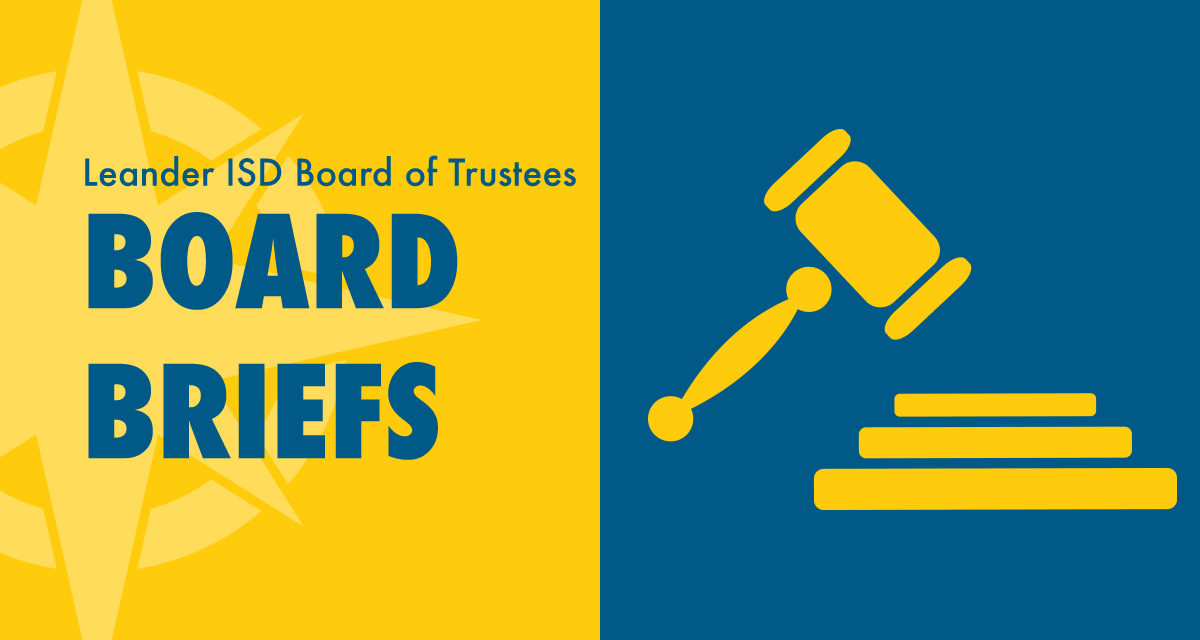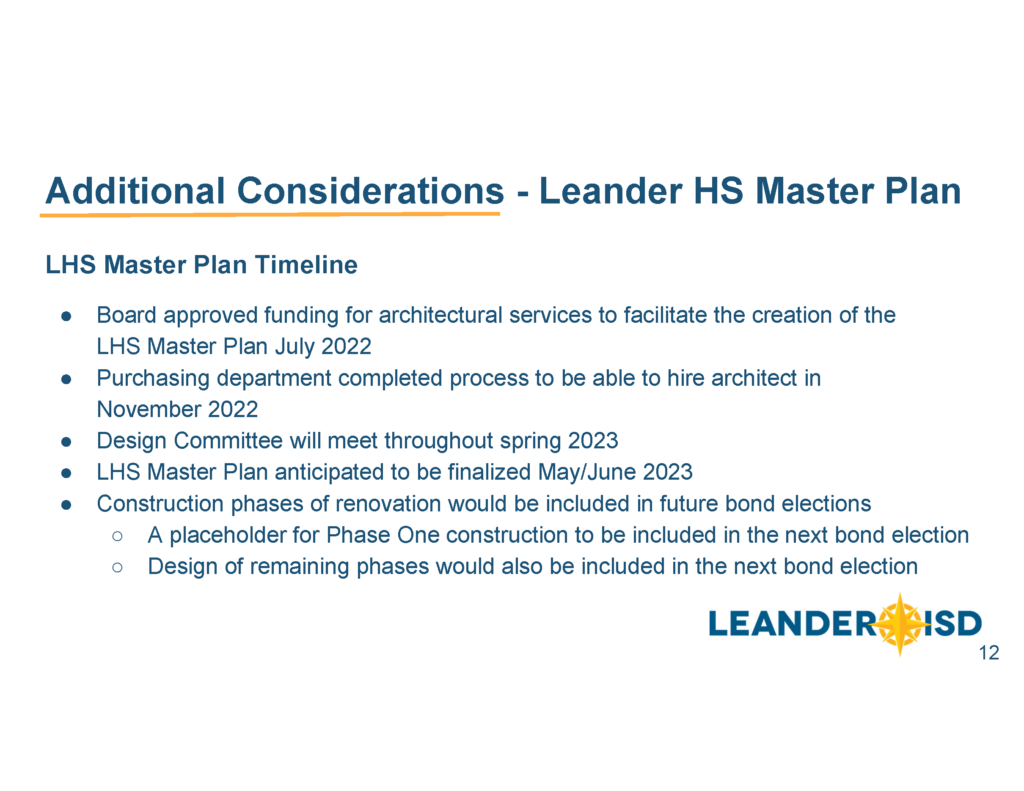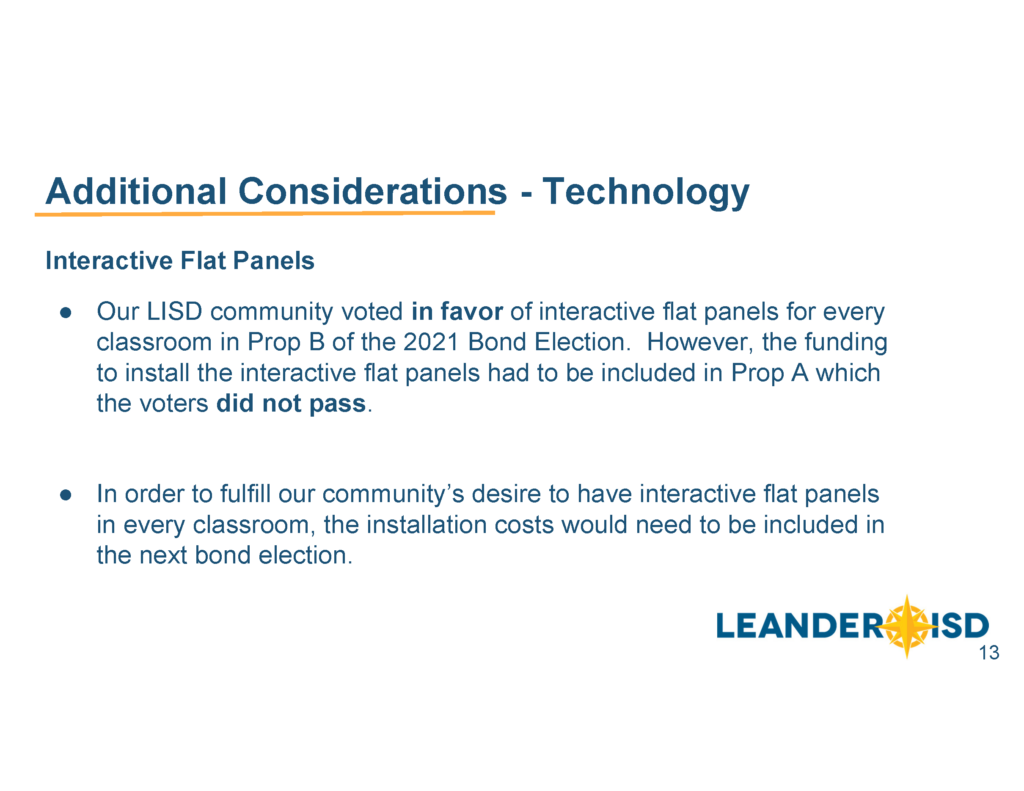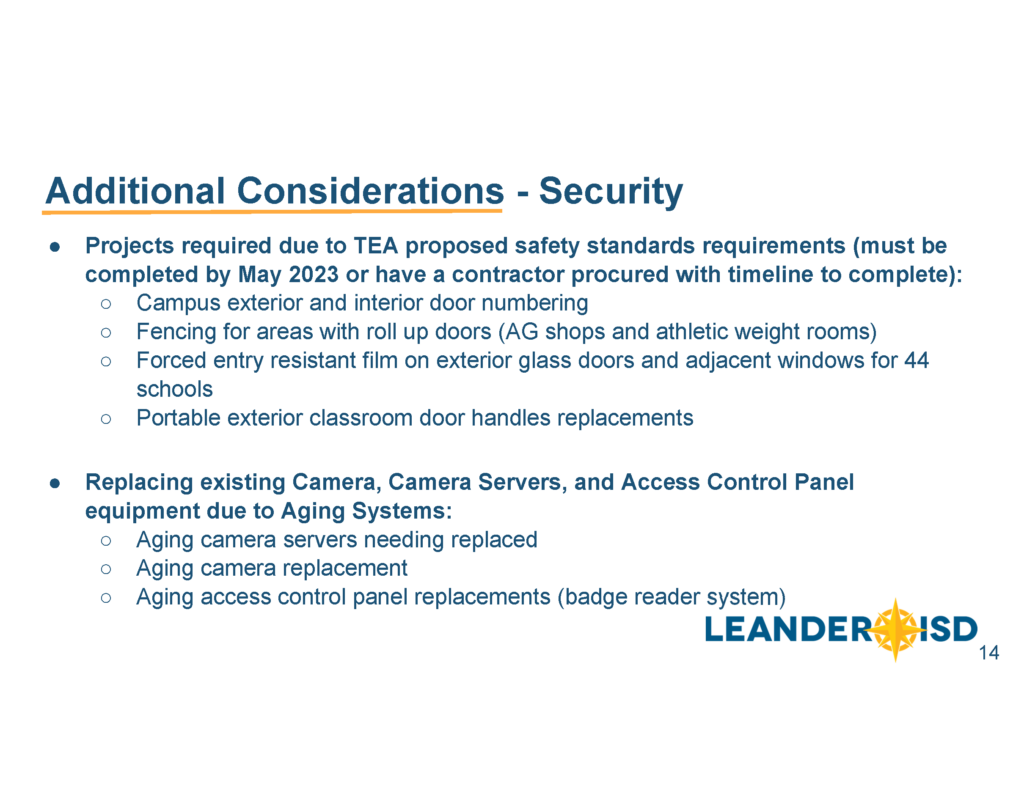During its Feb. 7 meeting, the Leander ISD Board of Trustees:
- discussed how school finance impacts our local tax rate and the overall debt capacity for a potential bond
- discussed the recommendations of the Citizens’ Facility Advisory Committee (CFAC) and its alignment with the district’s Long-Range Plan
In light of a potential bond election in May, Trustees called for a Special meeting Tuesday to go into further details about bond funding, the Citizens’ Facility Advisory Committee’s bond recommendations and how it supports the district’s Long-Range Plan.
Can LISD Afford a Bond?
🎬 3.A. Discussion of Public School Finance
Chief Financial Officer Pete Pape made a presentation to the Board explaining our tax rate and what it pays for. Split into two functions, Maintenance and Operations covers the day-to-day expenses of the school district, like employee salaries and benefits, while the Interest & Sinking portion of the tax rate can only be used to pay down debt.
In August 2022, the Board adopted an I&S tax rate of $0.33 per $100 valuation. According to Pape, the district would have bond debt capacity of up to $1.4 billion over the next four years without increasing the tax rate, depending on how the bond was structured.
“I hope our community sees that just because we have that bond debt capacity, it may not be the same amount as a called bond; it means it’s part of several moving parts,” Board President Trish Bode said. “Future growth impacts our prospective bond capacity, our bond rating, and–bottom line–state funding. These are all key factors trustees need to fluently understand in order to be prepared to discuss with our community.”
Pape affirmed the complexity of debt management, which includes a concerted effort to pay off as much debt as early as we can. However, the overall goal is to keep the tax rate consistent for taxpayers.
Taking a Three-Pronged Approach to the Proposed Bond Election
In considering a bond election in May, the district has a unique opportunity to ensure we have incorporated the Long-Range Plan, consider prioritized district needs brought to the Board by Empowered Staff and build it into CFAC’s bond recommendations.
After two out of three bond measures failed in 2021, the district created a Long-Range Plan that focused on four key areas:
- student access to learning experiences that interest them
- facility optimization
- fiscal responsibility
- changes in population over time
During a presentation from Chief of Staff Laurelyn Aterbury, Ed.D., and Chief Facilities Officer Jimmy Disler, the Board had the opportunity to see how CFAC recommendations align with the Long-Range Plan. While the CFAC bond recommendations address rapid growth in the north part of the district, there are schools located in central and south where enrollment projections show they’re under capacity. By repurposing these buildings as Early Childhood Centers, the district could prevent the need to build an additional elementary school. Furthermore, the district can defer the construction of additional buildings as well as provide students the opportunity to attend Schools of Choice. No decisions regarding modified utilization have been made.
Arterbury shared considerations for a bond election, which could be made possible through modified utilization of existing buildings:
- New Hope High School
- Early Childhood Center(s) (ECC)
- If the district chooses not to utilize ECCs, then another new elementary will need to be added the next bond to accommodate growth
- LEO campus (if current LEO campus is utilized as an Early Childhood Center)
- Schools of Choice
- Additional administrative offices
In addition, district staff has asked the Board to consider including additional items in a bond:
- Leander HS master plan
- Technology
- Security
“Because the bond failed in 2021, we’re a little behind the eight ball,” Trustee Christine Mauer said. “Costs have risen exponentially. It’s important for our community to understand the big picture. They have the information available on the website and in many places where you can see with transparency that this is the cost of doing business, and we’re in the business of taking care of kids.”
Through transparency in the CFAC recommendation process, the guiding principles of the Long-Range Plan and additional considerations from district staff, the district has now woven together the collaborative work that was presented in a new proposal totaling $794.7 million.
During the Feb. 9 meeting, the Board invited CFAC Steering co-chairs to speak about specific bond recommendations. They will also hear an update from the district’s Early Childhood Programs in more detail. The Board faces a Friday, Feb. 17 deadline to call an election for May 2023.






